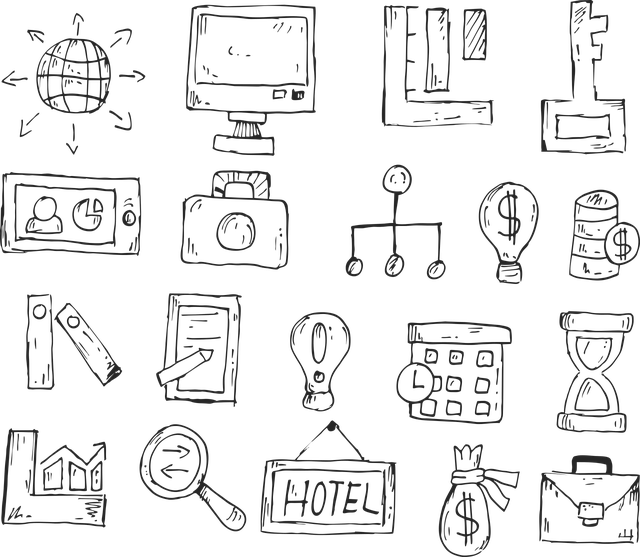AI space optimization for modular layouts is revolutionizing compact living spaces, particularly in mobile homes, through automated lighting adjustments powered by artificial intelligence. These systems analyze room dimensions and usage patterns to maximize efficiency, dynamically adjusting lighting, temperature, and other factors based on human activity and preferences. In mobile homes, AI-driven automation enhances comfort and energy conservation by learning and adapting to residents' routines, minimizing power consumption and eliminating the need for manual adjustments. Integrated with IoT devices, these systems create a connected home ecosystem that optimizes resource management, transforming mobile homes into intelligent, responsive environments tailored to inhabitants' needs.
In today’s digital era, AI is transforming various sectors, and the mobile home industry is no exception. AI space optimization for modular layouts offers innovative solutions to enhance living environments. This article explores the role of automated lighting adjustments in mobile homes, delving into how artificial intelligence can create smarter, more efficient spaces. We’ll examine implementation benefits and discuss how these advancements contribute to a seamless blend of technology and comfortable living.
- Understanding AI Space Optimization for Modular Layouts
- The Role of Automated Lighting Adjustments in Mobile Homes
- Implementation and Benefits: Creating a Smarter Living Environment
Understanding AI Space Optimization for Modular Layouts

AI space optimization for modular layouts is a game-changer in the way we design and utilize our living spaces, especially in compact or adaptable environments like mobile homes. By leveraging artificial intelligence, these systems can analyze and adapt to the unique dimensions and utilizations of each room, ensuring every square foot is utilized efficiently. This involves understanding patterns of human activity and personal preferences to adjust lighting, temperature, and other factors accordingly.
The beauty of AI space optimization lies in its ability to create a dynamic and personalized environment without constant manual intervention. In the context of mobile homes, where space is often at a premium, automated lighting adjustments can significantly enhance comfort and functionality. Imagine waking up to sunlight-simulated lighting that adjusts naturally throughout the day or dimming lights in unoccupied rooms to conserve energy—all achieved through AI algorithms that learn your routines and preferences over time.
The Role of Automated Lighting Adjustments in Mobile Homes

Automated lighting adjustments play a pivotal role in enhancing the comfort and energy efficiency of modern mobile homes. By leveraging AI technology, these systems intelligently adapt to changing conditions inside the space, optimizing light levels and color temperatures. This not only creates a more pleasant living environment but also contributes to significant energy savings by minimizing unnecessary power consumption.
In the context of AI space optimization for modular layouts, automated lighting is a key component. Modular homes, with their flexible and customizable designs, benefit greatly from these adjustments as they allow for dynamic ambient conditions tailored to various activities and user preferences. Whether it’s adjusting brightness levels during different times of the day or changing color schemes for specific moods and tasks, AI-driven lighting systems offer unparalleled control and customization, making mobile homes more livable and efficient.
Implementation and Benefits: Creating a Smarter Living Environment

The implementation of AI-driven automated lighting adjustments in mobile homes represents a significant step towards creating smarter living environments, particularly within the context of AI space optimization for modular layouts. By leveraging machine learning algorithms, these systems can adapt to residents’ routines and preferences, automatically adjusting lighting levels based on occupancy, time of day, and even natural light availability. This not only enhances energy efficiency by reducing unnecessary power consumption but also contributes to a more comfortable and personalized living experience.
In terms of benefits, automated lighting systems offer convenience and cost savings. They eliminate the need for manual adjustments or timers, allowing residents to focus on their daily activities without worrying about lighting controls. Moreover, these smart technologies can be integrated with other IoT devices, creating an interconnected home ecosystem that optimizes both comfort and resource management. This holistic approach to AI space optimization for modular layouts promises a future where mobile homes are not just functional spaces but truly intelligent, responsive environments tailored to the needs of their inhabitants.
AI space optimization for modular layouts offers a revolutionary approach to lighting adjustments in mobile homes, enhancing comfort and efficiency. By automating lighting controls, these innovative systems adapt to users’ routines and preferences, creating a smarter living environment. The implementation of such technology not only improves energy conservation but also provides a customizable ambiance, ensuring residents enjoy a well-lit and personalized space. This advancement in AI integration promises a future where mobile homes are not just temporary shelters but modern, technologically advanced homes that cater to individual needs.
